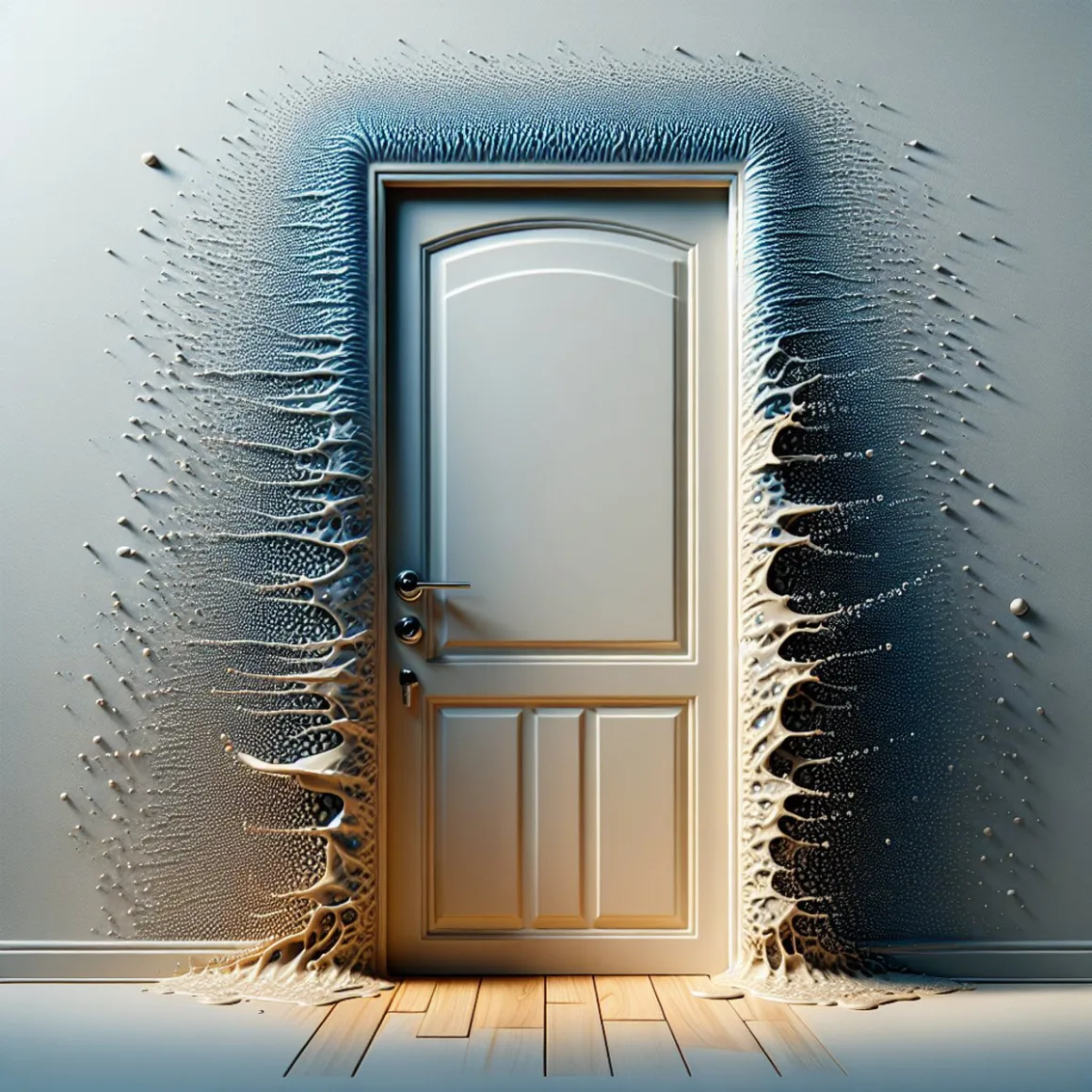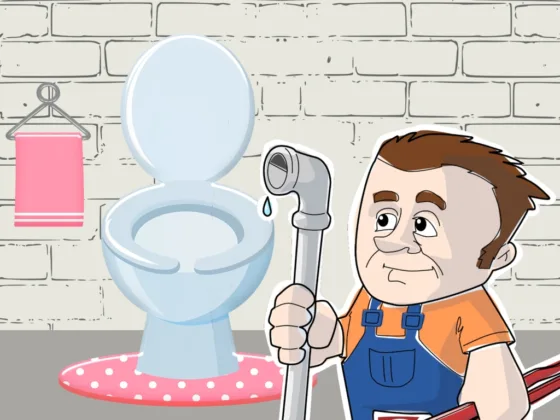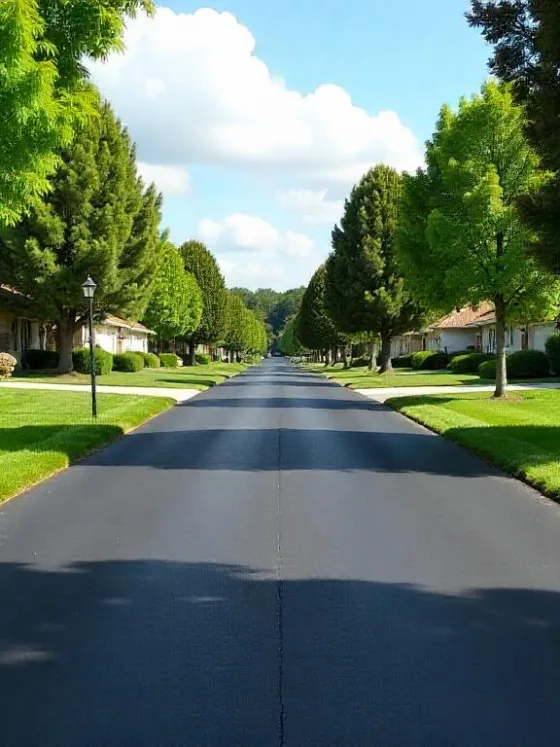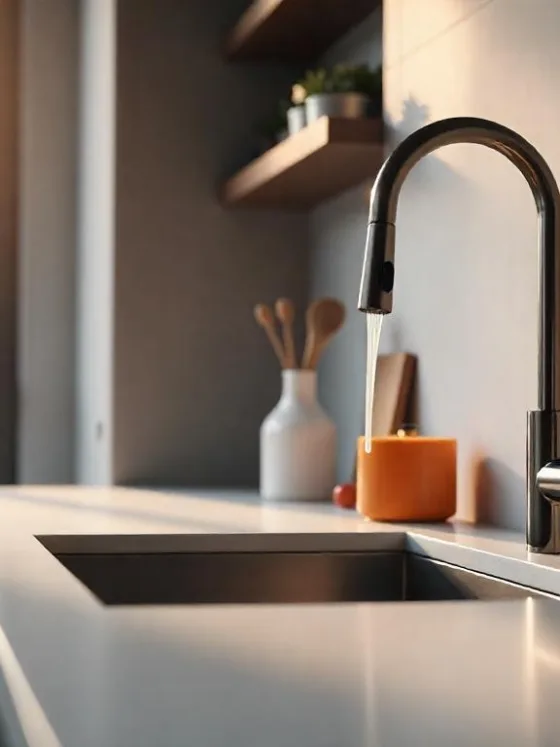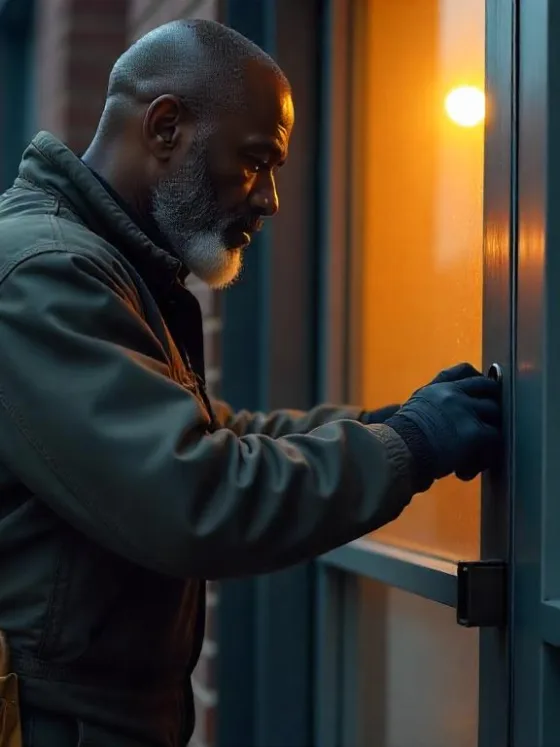Table of Contents Show
Introduction
Imagine waking up to a puddle of water in your living room, all thanks to a door not installed properly. Sounds like a nightmare, right? Well, proper door installation plays a crucial role in preventing water leaks, acting as the first line of defense against damaging moisture intrusion.
The logic is simple: doors serve as entry and exit points, but they should only welcome guests into your home, not water. If installed correctly, doors can effectively keep out rainwater or any moisture from seeping into your dwelling.
But what does ‘proper’ installation entail? It’s not merely about hanging a door in its frame. It involves aligning the door correctly, ensuring a snug fit, using the right sealants, and applying precise caulking techniques. These steps are essential to create an impervious barrier against potential water leaks.
Here’s the key takeaway: You don’t want to risk your precious home assets by cutting corners during door installation. Investing in professional installation services and effective sealing techniques will save you from expensive repair jobs down the line. So why not call an expert for this critical task? After all, taking action now can prevent costly water damage repairs later on.

The Importance of Professional Installation for Basement Doors
Basement doors are often neglected until water finds its way in. Here’s why professional installation is essential for your below-ground fortress:
Facing the Challenges Head-On
1. Battling Against Gravity
Water loves gravity, and basements sitting below ground level are easy targets for runoff and moisture trying to seep in.
2. Material Matters
The door materials need to withstand time and dampness without turning into breeding grounds for mold and decay.
3. The Great Seal
Proper sealing is crucial to keep water out. A professional knows how to ensure doors fit snugly.
Why Call in the Pros?
Let’s explore why hiring professionals can save you from water damage:
- Expert Eyes: Professionals have the expertise to spot potential entry points for water that amateurs might miss.
- Tools of the Trade: They have the right tools and materials to install your door correctly.
- Peace of Mind: Knowing that someone experienced is handling the installation can help you sleep better at night, even during storms.
DIY? Think Twice!
A word of caution for those considering DIY installations:
- Learning Curve: It’s more complicated than it seems. Installing a door requires skill and knowledge.
- Time vs. Cost: While you might save money initially, any mistakes could end up costing you more in the long run.
And while we’re on the subject of security, don’t forget that keeping water out is just one part of the equation. Making sure your front door is secure adds another layer of protection against intruders. The professional installation addresses both issues effectively.
So remember, whether it’s preventing water leaks or ensuring your fortress is secure, professional installation is key. With proper sealing techniques and expert know-how, water leaks in basement doors will become a thing of the past.
Also Read: A Guide to Adding Insulation to an Older Brick Home
Common Installation Mistakes That Compromise the Waterproofing of Doors

Even with the best of intentions and a seemingly sound DIY plan, certain errors during door installation can lead to water infiltration. Not all maladies are visible to the untrained eye, but over time, these minor oversights can gradually evolve into major problems. Let’s delve into some of these common installation mistakes that often compromise the waterproofing of doors:
1. Improper Alignment and Leveling
An improperly aligned door is an invitation for trouble. If the door isn’t level, it creates tiny gaps where water can seep in, especially during heavy rain or snowfall. Remember, water has an uncanny knack for finding its way through even the smallest spaces.
2. Inadequate Use of Weatherstripping and Sealing Materials
Another common pitfall is underestimating the importance of weatherstripping and other sealing materials. These components act as barriers against water, wind, and even noise. When not used adequately or skipped altogether – you’re practically rolling out a welcome mat for water leakage.
3. Lack of Proper Flashing and Sill Pan Installation Techniques
Flashing is to doors what umbrellas are to us on a rainy day – essential! It serves as an extra layer of protection over joints to prevent water seepage. Similarly, sill pans catch the water that might have seeped in and safely guide it away from your home structure. Overlooking these crucial elements can speed up your date with water damage.
4. Failure to Provide Sufficient Insulation and Use Appropriate Caulking Methods
Last but not least are insulation and caulking – two key aspects that often don’t get the attention they deserve during door installations. Insulation not only keeps your home warm but also deters condensation which can lead to water leakage over time. Caulking seals off gaps between different parts of your door set up, ensuring water stays where it belongs – outside!
Remember, as tempting as it might be to embark on a DIY door installation journey (cue 20 Best DIY Hacks on a Budget According to TikTok Creators), professional help can save you from these common pitfalls. After all, an ounce of prevention is worth a pound of cure.
Effective Strategies for Sealing the Door Frame-Wall Interface
Water leaks often occur due to poor sealing at the interface between the door frame and the wall, an area that can be overlooked during installation. A snug-fitting door frame is essential in preventing leaks and protecting your home from water damage.
Assessing and Addressing Gaps
Before installing a door, assessing and addressing any gaps between the door frame and walls is a crucial first step. This involves inspecting the area closely and using filler material to eliminate any voids that could potentially allow water intrusion.
- If there’s too much space around the door frame, you might use a backer rod, which is a flexible foam product used in construction to fill large gaps before applying caulk or sealant.
- If the gap is small, you may opt for a high-quality, moisture-resistant sealant directly.
Utilizing Weatherstripping, Sealants, and Foam Insulation
Once you’ve addressed any gaps, your next line of defense against water leaks is through proper sealing of the door frame-wall interface.
- Weatherstripping is a simple yet effective tool for sealing doors. It’s typically made of rubber or plastic and can be applied around the edges of your door frame to create a tight seal when your door is closed.
- Sealants are also invaluable in making sure no water finds its way through your doors. These come in various types depending on the material of your door and the climate conditions in your location. Be sure to choose one that’s suitable for your specific needs.
- Foam insulation serves a dual purpose: preventing heat loss (or gain) while also providing an added layer of protection against water leaks. It fills up space around your door frame, preventing air and water from infiltrating through tiny cracks or crevices.
These strategies will help ensure that every inch of your door frame-wall interface is adequately sealed, thus protecting your home against potential water damage. As always, if you’re unsure about any part of this process, it’s best to consult with a professional to ensure optimal results and protect the integrity of your home.
In a related guide on our blog, we delve into details on adding insulation to an older brick home. The same principles can be applied when insulating and sealing door frames, offering additional protection against water leaks.
Ensuring Watertightness Through Proper Caulking and Foam Insulation Techniques
When it comes to keeping the elements at bay, caulking techniques and foam insulation are superheroes in the world of watertight doors. They work together to block any potential water intruders from entering your cozy home. Here’s how to make sure your doors can withstand even the heaviest rain:
Choosing the Right Caulk
- Compatibility with Door Materials: Not all caulk is the same. Silicone-based caulk is flexible and sticks well to metal and glass, making it perfect for patio doors. Acrylic latex caulk, on the other hand, is great for wooden door frames as it can be painted over and is easy to work with.
- Environmental Considerations: In areas with extreme weather changes, look for caulk that is labeled as ‘weatherproof’ or ‘exterior grade.’ These types of caulk are designed to handle Mother Nature’s ups and downs without shrinking, cracking, or losing their seal.
Step-by-Step Caulking Guide
- Clean the Area: Remove any old caulk and debris. A clean surface ensures that the new caulk will stick properly.
- Apply Tape: Use painter’s tape to create straight lines and prevent any messes.
- Cut It Right: Cut the nozzle of the caulk tube at a 45-degree angle for easier application.
- Smooth It Out: After applying the caulk, smooth it out with a wet finger or a caulk tool for a seamless finish.
- Remove the Tape: Peel off the painter’s tape while the caulk is still wet to reveal clean edges.
The Benefits of Foam Insulation
- Fills in Gaps: Spray foam can expand into small spaces that other materials can’t reach, ensuring a tight seal.
- Energy Efficiency: In addition to sealing, foam insulation also helps with energy efficiency by reducing heat transfer through the door.
- Adapts to Changes: It adjusts to the shifting dimensions of door frames over time, maintaining a strong barrier against water.
By using these techniques during door installation, you’re not just putting in a door; you’re strengthening your home’s protection against water damage.
Remember, taking extra care during installation can save you from dealing with water leaks in the future. So grab that caulk gun and foam applicator confidently—your dry floors will appreciate it!
The Door to a Dry Home: Prioritizing Proper Installation and Sealing Techniques
Your home houses dreams, memories, and loved ones. For its longevity and safety, every inch matters, including the doors. As we’ve discussed earlier, proper door installation and effective sealing techniques are crucial in preventing water leaks.
The Importance of Proper Door Installation
It’s not just about aesthetics or security; it’s also about avoiding those damp patches on your floor or the musty smell that accompanies water damage. These issues can often lead to more significant problems like structural damage, mold growth, and even health problems.
The Role of Sealing Techniques
Sealing your doors properly is an essential part of keeping your home dry. Here are some key points we’ve covered:
- Professional installation for basement doors: Basement doors are particularly vulnerable to water intrusion due to their below-grade location. Hiring professionals who understand the unique challenges of installing basement doors can help ensure a watertight seal.
- Common mistakes during door installations: From improper flashing installation to inadequate weatherstripping, we’ve highlighted some common errors that can compromise the waterproofing of your doors.
- Strategies for sealing the door frame-wall interface: Achieving a tight seal between the door frame and the surrounding wall is critical in preventing water leaks. We’ve discussed techniques such as using self-adhesive waterproof membranes and applying sealant correctly.
- The role of caulking and foam insulation: Caulking and foam insulation are two essential tools in enhancing the water resistance of doors. Applying caulk along gaps and cracks in the door frame can help prevent water from seeping in, while foam insulation can provide added insulation and weatherproofing.
Taking Action: Hiring Professionals and Following Best Practices

Now that we have a better understanding of the importance of proper installation and sealing techniques let’s talk about what we can do to ensure our doors are watertight:
- Hire professionals: When it comes to door installation, especially for basement doors, it’s best to leave it to the experts. They have the knowledge and experience to handle the complexities involved in waterproofing doors, including proper alignment, weatherstripping, sealant application, and insulation.
- Follow recommended strategies: Whether you’re installing a new door or upgrading an existing one, it’s essential to follow best practices for ensuring watertightness. This includes creating a comprehensive seal between the door frame and the wall using appropriate sealants, weatherstripping, and insulation materials.
The Value of Preventative Measures in Home Maintenance
Let’s not underestimate the value of preventative measures in home maintenance. Investing resources now is better than facing expensive repairs down the road. Your home deserves that extra care! So let’s put our learnings into action and make our homes safer, drier, and cozier.
“Your home is your haven. Let’s keep it dry and welcoming.”
Speaking of investing resources wisely in home maintenance, I came across this insightful article on 15 Budget Home Renovation Ideas for Stunning Spaces. It offers some fantastic tips on revamping your home without breaking the bank. These ideas can help us transform our spaces smartly while maintaining style and comfort.”
FAQs (Frequently Asked Questions)
Proper door installation plays a crucial role in preventing water leaks by ensuring that the doors are effectively sealed and aligned. Investing in professional installation services and implementing effective sealing techniques can help avoid costly water damage issues in your home.
Basement doors are particularly vulnerable to water leaks due to their exposure to moisture and potential flooding. Hiring professionals to install watertight basement doors and ensuring proper sealing can help mitigate these challenges.
Some common installation mistakes that compromise the waterproofing of doors include improper alignment and leveling, inadequate use of weatherstripping and sealing materials, lack of proper flashing and sill pan installation techniques, and failure to provide sufficient insulation and use appropriate caulking methods.
Many door leaks occur at the door frame-wall interface due to poor sealing. It is crucial to assess and address gaps between the door frame and walls before installation, as well as utilize weatherstripping, sealants, and foam insulation for a comprehensive seal.
Caulking and foam insulation play a significant role in enhancing the water resistance of doors. Choosing the right type of caulk for different door materials and environmental conditions, applying caulk around the door frame and joints effectively, and using foam insulation for both insulation and sealing purposes are essential strategies for ensuring watertightness.
Taking proactive measures during door installation, such as hiring professionals and utilizing proper sealing techniques, is important to prevent water leaks. Prioritizing professional door installation services and following recommended strategies for ensuring water tightness can safeguard homes from potential water damage issues.
